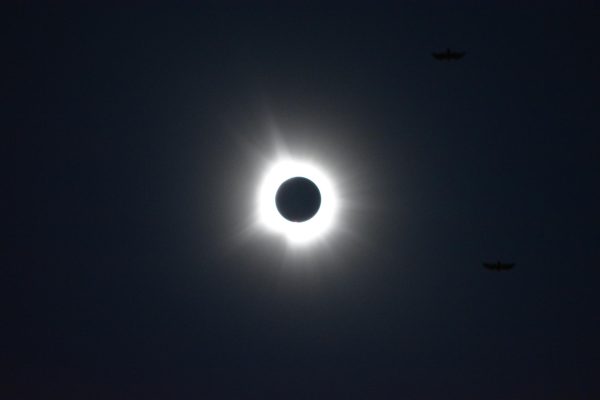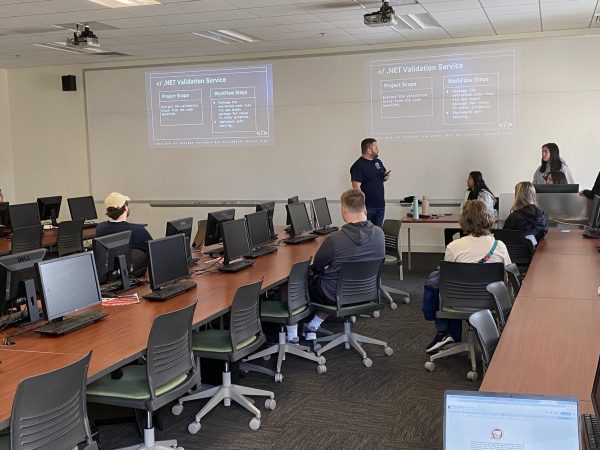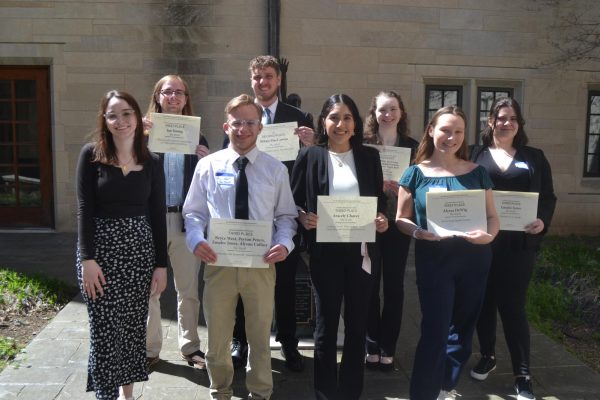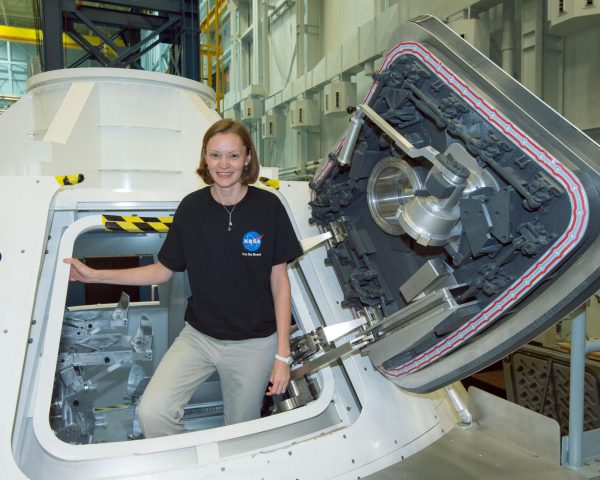Federal research partnership focuses on pyrotechnic pollutants
USI and Naval Surface Warfare Center (NSWC), Crane Division strengthened a decade-long relationship with a new research agreement last month.
The Cooperative Research and Development Agreement (CRADA), signed Oct. 22, outlines the legal framework for USI labs and the federal labs at NSWC Crane to conduct cooperative research, Crane Director of Research Jonathan Dilger said.
The agreement marks the beginning of a three-year project studying pyrotechnics and munitions. Researchers will develop new test methods to study performance and emission toxicity.
“This project is a larger project than previous partnerships between USI and NSWC Crane,” said Dilger, who is also the Crane CRADA principal investigator.
The CRADA followed the publication of a USI-Crane research paper by American Chemical Society Sustainable Chemistry and Engineering and was a collaborative effort in which Dilger sent data to USI for analysis, Assistant Professor of Chemistry Brian Bohrer said.
The paper primarily focused on studying pyrotechnic emissions through pyrolysis, which is decomposition brought about by high temperatures.
The pyrotechnics discussed in the paper were military yellow signal flares, which are used to create light in military exercises.
“The team at Crane was already investigating some greener alternatives that they could employ in pyrotechnic devices,” said Bohrer, who is also the USI CRADA principal investigator.
Bohrer said the Crane team has a new formulation that could potentially replace what is currently used.
“The impetus for the reformulation and making it greener…was removing the perchlorates,” Bohrer said. “The reason they wanted to avoid perchlorates is because that substance can inhibit the thyroid and lead to various physiological issues.”
Bohrer said the flares that are being studied are used year-round in training exercises.
“The grounds become covered in residue from these tests,” he said. “There were (military) bases that had to be shutdown for remediation and cleanup because the amount of perchlorate was tens or hundreds of times the EPA guideline.”
Bohrer said perchlorate wasn’t the only compound that was a problem because flare emissions contain many chemicals that could be carcinogenic.
Dilger said that removing the perchlorate, which is a source of chlorine that makes the flare work as intended, meant they needed to add a new source of chlorine.
“For the military, if you have a specific flare, it must function in a specific way,” Dilger said.
The flare with the new source of chlorine also produced toxic and carcinogenic emissions.
Dilger said that because the materials being used are dangerous, performing large-scale tests was not feasible, and will have to continue identifying and testing.
Bohrer said the team performed a combustion test of these flares on a microscale by taking a milligram sample in a tiny quartz tube and elevating the temperature until the material burned.
“(The team) siphoned the emissions into a gas chromatograph mass spectrometer. This piece of equipment can separate out the gaseous emissions component by component and we can identify what each individual component is,” Bohrer said. “We think this microscale technique to analyze the types of products that are given off by this type of pyrotechnic device could be a useful tool to quickly profile the types and amounts of objectionable emissions.”.
Senior biochemistry major Jessica Coleman was the research assistant who analyzed data, created the graphical abstract and drew chemical structures using specialized software.
She also helped Bohrer write the paper that was published last month.
One of Coleman’s contribution to that process was the literature review.
“Students can really learn a lot through that process of trying to find a particular reference and reading enough of all of the wrong ones before finding the right one,” Bohrer said. “You pick up a lot of information.”
Coleman said she was most interested in the polluted environments’ effects on people’s health — particularly in thyroid issues.
“I compared the laboratory data with a predictive computer model,” she said.
Coleman said it was interesting that in the lab the flare produced EPA-regulated pollutants, but the computer program didn’t predict it would.
Bohrer emphasized that predicting the emissions was not easy.
“We analyzed several of the individual flare components, and we analyzed the mixed pyrotechnic,” Bohrer said. “There were some things that were formed in the presence of all of those components that weren’t there when we piecewise analyzed the individual components. It’s not really straightforward to anticipate the products that are going to be made just based on what you put into the flare.”
The researchers hope to pursue partnerships beyond the CRADA including outside funding, co-publication and conference presentations.
Dilger said he will present the paper to NATO next year.
USI President Ron Rochon said the CRADA provides great professional development opportunities for students.
“There are working opportunities just up the road from us,” he said. “Making sure we are responsive to that need is significant.”
Rochon said Crane indicated it would soon be hiring 400 people.
“They are going to need more engineers,” Rochon said. “I want USI to be a responsive agent to answer that call.”










